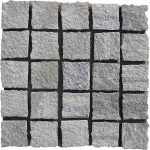Introduction
Soapstone, a metamorphic rock primarily composed of talc, has been used for centuries in various cultures for its beauty, durability, and heat-retention properties. In recent years, a new innovation has emerged in the world of interior design and architecture - cultured soapstone. Cultured soapstone combines the timeless elegance of natural soapstone with modern technology to create a versatile material that is revolutionizing the way we think about stone surfaces. In this article, we will explore the origins of soapstone, the manufacturing process of cultured soapstone, its unique properties, and the wide range of applications for this innovative material.
Origins of Soapstone
Soapstone is a naturally occurring rock that is found in various parts of the world, including Brazil, India, and the United States. It is known for its soft, smooth texture and its ability to retain heat, making it a popular choice for countertops, sinks, and fireplaces. Soapstone gets its name from the soapy feel of its surface, which is due to the high talc content in the rock.
Historically, soapstone has been used by different cultures for a wide range of purposes. In ancient Egypt, it was used to create sculptures and vessels due to its workability and resistance to heat. In China, soapstone carvings have been prized for their intricate designs and cultural significance. In North America, Native American tribes used soapstone for cooking vessels and decorative items.
The unique properties of soapstone, such as its heat retention, resistance to staining, and durability, have made it a popular choice for modern homeowners and designers looking for a natural, elegant material for their projects.
Manufacturing Process of Cultured Soapstone

Cultured soapstone is a man-made material that replicates the look and feel of natural soapstone through a specialized manufacturing process. The process begins with the selection of high-quality raw materials, including finely ground natural soapstone, resins, and pigments. These ingredients are mixed together in precise proportions to create a homogenous mixture.
Stone veneer for energy-efficient homes in the manufacturing process is the casting of the soapstone mixture into molds. These molds can be custom-designed to create a wide range of shapes and sizes, allowing for endless design possibilities. Once the mixture is poured into the molds, it is allowed to cure and harden, a process that can take several hours to complete.
After the soapstone has cured, it is removed from the molds and undergoes a series of finishing processes to achieve the desired texture and appearance. This can include sanding, polishing, and sealing to enhance the natural beauty of the material. The final step is quality control, where each piece of cultured soapstone is inspected to ensure it meets the highest standards of craftsmanship and durability.
Properties of Cultured Soapstone
Cultured soapstone offers a wide range of properties that make it an attractive choice for interior design and architectural projects. Some of the key properties of cultured soapstone include:
1. Durability: Cultured soapstone is highly durable and resistant to scratching, chipping, and staining, making it ideal for high-traffic areas such as kitchen countertops and bathroom vanities.
2. Heat Retention: Like natural soapstone, cultured soapstone has excellent heat retention properties, making it a popular choice for fireplaces and outdoor kitchens.
3. Versatility: Cultured soapstone can be custom-designed to fit any project, from large kitchen islands to intricate bathroom sinks. Its versatility allows for endless design possibilities.
4. Easy Maintenance: Cultured soapstone is easy to clean and maintain, requiring only mild soap and water for regular upkeep. It does not require sealing like natural stone surfaces.
5. Eco-Friendly: Cultured soapstone is a sustainable choice for environmentally-conscious consumers, as it is made from natural materials and can be recycled at the end of its lifespan.
Applications of Cultured Soapstone
The versatility and beauty of cultured soapstone make it a popular choice for a wide range of interior design and architectural applications. Some of the most common uses of cultured soapstone include:
1. Kitchen Countertops: Cultured soapstone is a popular choice for kitchen countertops due to its durability, heat resistance, and timeless beauty. It can be custom-designed to fit any kitchen layout and style.
2. Bathroom Vanities: Cultured soapstone is also used for bathroom vanities, offering a luxurious and durable surface for everyday use.
3. Fireplace Surrounds: The heat retention properties of cultured soapstone make it an ideal choice for fireplace surrounds, creating a cozy and inviting atmosphere in any room.
4. Outdoor Kitchens: Cultured soapstone is a popular choice for outdoor kitchens and grilling stations, offering a durable and stylish surface that can withstand the elements.
5. Furniture: Cultured soapstone can be used to create custom furniture pieces such as tables, benches, and shelving, adding a touch of elegance to any space.
Conclusion
Cultured soapstone is a versatile and innovative material that combines the timeless beauty of natural soapstone with modern technology. Its durability, heat retention properties, and easy maintenance make it an ideal choice for a wide range of interior design and architectural applications. Whether used for kitchen countertops, bathroom vanities, fireplace surrounds, or outdoor kitchens, cultured soapstone adds a touch of elegance and sophistication to any space. As the demand for sustainable and eco-friendly materials continues to grow, cultured soapstone is poised to become a popular choice for homeowners and designers looking for a durable and stylish alternative to traditional stone surfaces.
